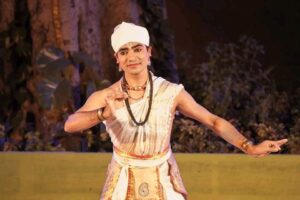In 2008 after starting the training institute in New Delhi, I led my dance group to Europe for one month long tour with dance performances and workshops. The activities have gradually been expanded to different parts of the globe- not only for the performance and workshop, but also for the academic purpose through association with some prestigious Universities, like- Paris-VIII University, & University of Toulouse, France, King’s College University of London, Brown University & Drexel University, USA. National Autonomous University of Mexico, Dali university, China and Dhaka University, Bangladesh.
The first master degree in Sattriya dance was obtained from Paris-VIII University in 2013, whereas the first batch of Master’s degree course from the Dibrugarh University was out three months later than the Paris-VIII. Then a doctoral degree was also pursued from King's College London in the last year.
Till to date, more than thousands of foreign students have been engaged in Sattriya training as well as in academic study in different countries like- France, England, United State of America, Hong Kong, Switzerland, Germany, Italy, Portugal, Mexico, Columbia, Brazil, Russia, Denmark, Norway, Belgium, Belarus, Chile, China, Bangladesh etc.
Due to the continuation of the multinational training processes, we are able to execute some remarkable projects as well; I want to mention two below-
• The Vrindavani Vastra research cum production project- this project was started in 2009 and its work has been presented in the Musee Guimet, Paris, British Museum, London and Philadelphia Museum of Arts, USA. There were also performances of about 100 shows in different prestigious festivals, museums and universities of different countries.
• Ankia Bhaona production project- Several Ankia Bhaona were enacted by the foreign students in different foreign languages. They are- Parijat Haran in French Language by students from France, Italy, Belgium and Denmark; Ram-vijoy in Spanish Language by students from Mexico, France, Italy, Belgium, Denmark and Slovenia; Keli-gopal in English Language students from Brown University , USA.
It has been a fulfilling experience for me to engage in Sattriya activities outside India. In addition to the above, we have a strong and long activities list as well.

